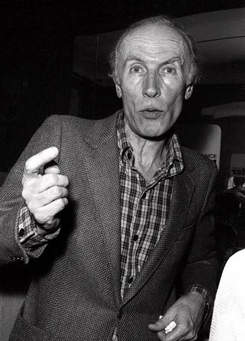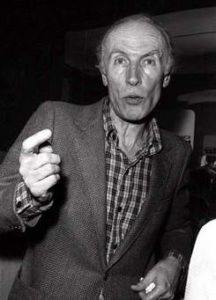I cannot remember when I first saw an Eric Rohmer film nor which one it was. Over time, though, I have seen all the extant full length films as well as two or three of his shorts and have received much pleasure from them. This year two books have been published on him in English. a translation of a biography (“Eric Rohmer: A Biography” by Antoine de Baecque and Noel Herpe) and a clear, systematic analysis ( “Eric Rohmer: Filmmaker and Philosopher” by University of Notre Dame professor Vittorio Hosle)
Rohmer.s films have rightly been described as being characterized by an “elegant simplicity.” These two books, and Rohmer’s own critical writings, show whence this elegant simplicity flows and its purposes. Rohmer, a practising Catholic, believed that the world has an inherent beauty and that film, of all the arts, can best capture it
His style of film-making is called realism. He often used direct sound and minimal lighting for example, and seldom used special effects.. He often used 16 millimeter film because the lighter camera makes it easier to film on the streets. He preferred long takes. This realism even extended to the actors. Often he spent time getting to know them and this sometimes influenced his writing of the characters they were to depict. His realism is thus psychological as well. In Rohmer’s films, human beings are not simply plot-driven puppets who act but rather beings who try to rationalize what they do or desire to do; so conversation plays a large role in his films. The people depicted are generally pretty normal; there are no heroes and few clowns or pure villains.
The biography (which is used by Dr. Hosle) is very informative. It uses Rohmer’s archives as well as interviews with, and writings by, those who knew him Most striking is Rohmer’s almost total separation of his personal life from his professional life. One of his two children (both sons) goes so far as to say he was not raised by a film-maker! The biographers humorously lament the fact the family life of Maurice Sherer (Eric Rohmer was a pseudonym). was so happy: “… Maurice Scherer’s family life has almost no interest for the biographer! Without scandal or uncomfortable secrets, it was simple, tranquil, reassuring, and no doubt dull; but certainly happy, like everything that has no story.” (Dr. Hosle claims Rohmer had an illegitimate daughter with a Danish woman but cites nothing in support of this.) The biography is revealing about his television work–little known outside France, I believe– which provided him with the means to support his family after his ouster as editor the prominent film journal of Cahiers du Cinema and before his breakthrough as a film director. The biography has little to say about his religiosity, something he never hid but did not dilate upon, at least in public. It does offer some information on his political views. While many artists and intellectuals in post-war France identified with the Left, Rohmer refused to do so. He did not see in this stance any contradiction with his strong environmentalism. (The biography discusses the tradition of rightist environmentalism in France.) The biographers reproduce this statement of Rohmer’s:: “I don’t know if I am on the Right, but in any case, one thing is certain: I’m not on the Left…I’m free, it seems to me! But people aren’t. Today, first you have to pronounce your act of faith in the Left, after which everything is permitted. So far as I know, the Left has no monopoly on truth and justice.” For all that, Rohmer appears to have been a tolerant man in his personal relations. Probably of most interest to fans is the biography’s rich descriptions of the making of each of the films..
The most prominent theme in Rohmers’s work is romantic love, and, in his book, Dr. Hosle concentrates on that in his enlightening analysis of the fourteen films on which he focusses. He credibly argues that, Rohmer’s filmic universe includes moral values and that, for Rohmer, romantic love is comprised of three elements: erotic attraction, friendship, and commitment. Dr. Hosle thinks that, in his films, Rohmer confronts the evaporation of the Christian sexual ethic in post-Christian Europe. Because of his deep appreciation for the beauty of the world, Rohmer’s critique of contemporary sexual mores is not ascetical, nor is his tone polemical. Instead he generally views his characters with compassion as well as irony and the judgements are unflinching but subtly conveyed.
Together, these two books give a good sense of Rohmer, a great film-maker and I would dare say perhaps the best of the realists.


